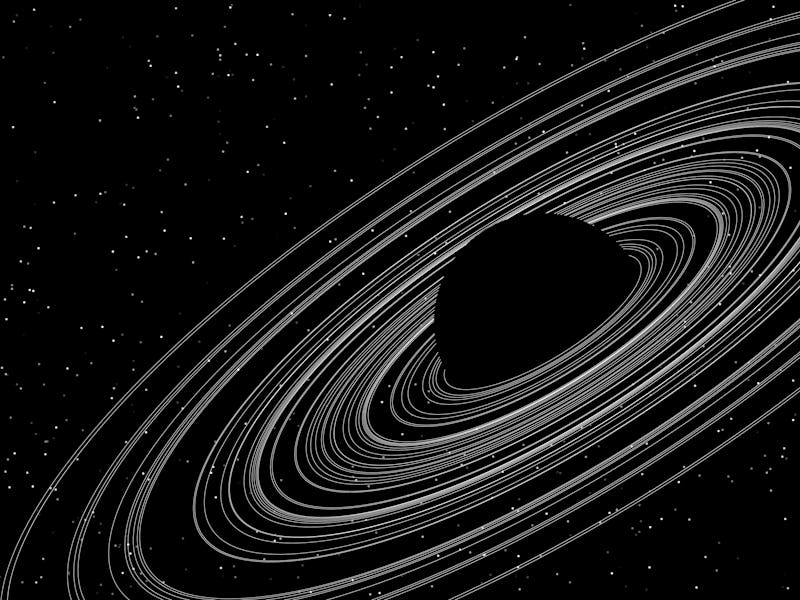Webb Telescope to investigate rogue black hole on the lam from its galaxy
A black hole is speeding through space at several million miles per hour.

In 2012, astronomers reported that cosmic forces had jettisoned the massive black hole CID-42 at a speed of several million miles per hour out of the center of its galaxy. It runs contrary to the idea that supermassive black holes live at the core of all big galaxies in the universe.
Ten years later, this team is among the lucky few to gaze through the sensitive eyes of the James Webb Space Telescope (JWST) as part of Cycle 1, which begins in November 2023 and runs until January 2024.
They hope the space telescope’s hyper-sensitivity will get to the root of what is happening.
“A lot of people are interested in using JWST because it is the most powerful space telescope ever built,” Francisco Muller Sanchez, an astrophysicist at the University of Memphis and leader of the upcoming CID-42 study, tells Inverse.
“The things that we hope to see cannot be seen with any other telescope, and it was not possible to see those things in the past,” he adds.
CID-42 is a supermassive black hole. It sits off-center within the galaxy highlighted here with a box. On the right, CID-42 (X-ray source) and its companion at the galactic core (optical) are visible.
Here’s the background — CID-42 might be a “recoiling black hole,” a fancy way to say it is moving out, according to astrophysicist and co-investigator Francesca Civano. She tells Inverse that the total number of known candidates for this title is only about 10.
Instances like CID-42 could mean that throughout the universe, many giant black holes roam undetected, made invisible because the highly-heated gas that typically surrounds them and gives away their location is missing.
Existing observations clearly show that CID-42 isn’t right at the center of its galaxy; in fact, this black hole shares space with another large object near the core. But this enigmatic object does not emit X-rays, the standard calling card for black holes.
The team is motivated by this secondary object and the black hole’s puzzling trajectory to learn more using JWST, and expect the space telescope will build upon the theories they have established that explain what they see.
Why it matters — The recoiling black hole might have been tossed by a tempestuous galactic merger. The team thinks at least two — possibly even three — galaxies clashed in the past, recombining the hefty black holes beating at their cores. If CID-42 is the new black hole, it may have received an abnormally-awkward kickback from the asymmetric gravitational waves produced by the crash. These cosmic forces are created when very massive objects, like black holes and neutron stars, collide.
An animation of the possible merger of two ancient galaxies, which crashed and created gravitational waves. This model shows these undulations may have been asymmetric and powerful enough to kick out the supermassive black hole CID-42 from the galactic center.
Typically the kick is slight, “only a few kilometers per second,” says Civano. Astronomical observatories don’t typically perceive it, and the black hole usually wriggles back to the center of the new galaxy.
But CID-42 is an exception.
What’s next — The upcoming observations will confirm a few things.
JWST will analyze the motions of stars in CID-42’s galaxy, and the movement of the disk surrounding the black hole. If the speeds differ, the team will confirm that CID-42 is a real recoiling black hole, elevating it from candidate to confirmed status.
That update allows the team to ask big questions about CID-42’s puzzling behavior.
“Because [CID-42] is offset, the question is, what are the kinematics of this object?” Muller Sanchez tells Inverse. “Is it moving away from the center of the galaxy? Is it moving towards the center of the galaxy? Is it orbiting the center of the galaxy, like a binary? Or, are there two supermassive black holes, and they are orbiting a common center of mass?”
The telescope will also peer at CID-42’s curious neighbor. Astronomers might unexpectedly find that a cluster of stars occupies this galactic center. Or, this oddball might be another supermassive black hole Muller Sanchez is referring to, which is hiding away behind what Civano calls a “brick wall” of dust and gas, thick enough to absorb the behemoth’s X-ray emissions. JWST will be sensitive enough to notice if the material is taking the energy and soaking it up.
Two colliding galaxies are visible in this JWST view of Stephan’s Quintet.
Moreover, this possible secondary black hole might prove that the current galaxy was once three galaxies, and that two of their central black holes combined and subsequently kicked out CID-42.
But, if the bright spot turns out not to be an obscured black hole, this galaxy is an exceptional example of how galactic evolution can go haywire and leave a galaxy without its quintessential churning heart.